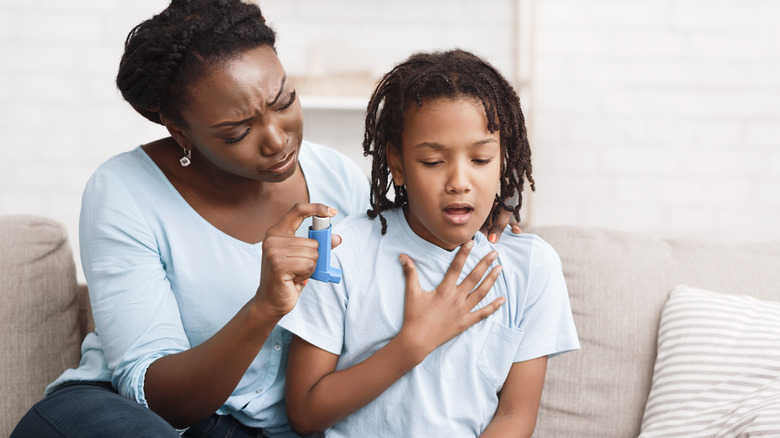What Puts You At A Higher Risk For COPD?
Chronic obstructive pulmonary disease (COPD) is a family of diseases that restrict your ability to breathe. According to Cleveland Clinic, 15 million people in the United States had COPD in 2020, but as many as 12 million people are undiagnosed with this progressive disease. Both emphysema and chronic bronchitis could lead to COPD. Emphysema occurs when the ends of the bronchial tubes — the alveoli — get damaged. The alveoli are involved in taking oxygen in and carbon dioxide out of the blood and lungs. Chronic bronchitis is the swelling and phlegm that respond to an irritation of the bronchial tubes in the lungs. Chronic bronchitis also damages the cilia, which are tiny hair-like structures in the lungs that sweep away any debris in the lungs.
Common symptoms of COPD are a persistent cough with mucus and shortness of breath during everyday activities or mild exercise. COPD is also associated with trouble taking deep breaths. According to Temple Health, COPD is often underdiagnosed or untreated because the symptoms are often similar to other conditions.
Risk factors and diagnosis of COPD
According to the Centers for Disease Control and Prevention (CDC), the biggest risk factor of COPD is smoking, with 80% of COPD deaths being smoking-related. You could also develop COPD as an adult if you smoked in your childhood or teenage years. However, up to 25% of COPD cases are nonsmokers.
Cleveland Clinic says that there are other risk factors involved with COPD. If you're female, over 65, exposed to heavy air pollution, or work in an environment that has heavy dust or chemicals, these could increase your risk for developing COPD. Alpha-1 antitrypsin (AAT) is a protein that protects harmful substances like pollutants from creating inflammation in your lungs. If you're deficient in this protein, you could also develop COPD. You might also be at risk for COPD if you had a lot of respiratory infections as a child.
Spirometry tests your lung function by determining the force of your exhale, according to Temple Health. Your doctor might also test your lungs by having you walk for six minutes or test to see if you have an AAT deficiency.
Prevention and treatment of COPD
The United States Preventive Services Task Force says it's unnecessary to screen people for COPD if they don't have symptoms — unless they were exposed to toxins during their jobs or if they have an AAT deficiency. Therefore, it's important to talk to your doctor if you notice any COPD symptoms, however minor they may seem. COPD is the sixth leading cause of death in the United States, and its lung damage is irreversible.
The CDC says you can prevent COPD by giving up cigarette smoking or never starting to smoke. If you spend time around people who smoke, try the best you can to stay away from second-hand smoke.
People with COPD might experience problems eating because of fatigue or breathing problems. If this is the case, they are often prescribed an eating plan including smaller, but more frequent, meals. People with COPD might also need to take supplements or vitamins to maintain their health. Other treatments for COPD might include exercise, nutritional and psychological counseling, or breathing strategies. Bronchodilators can ease breathing, and steroids could reduce swelling in the lungs. For those with severe COPD, oxygen therapy might be necessary.



